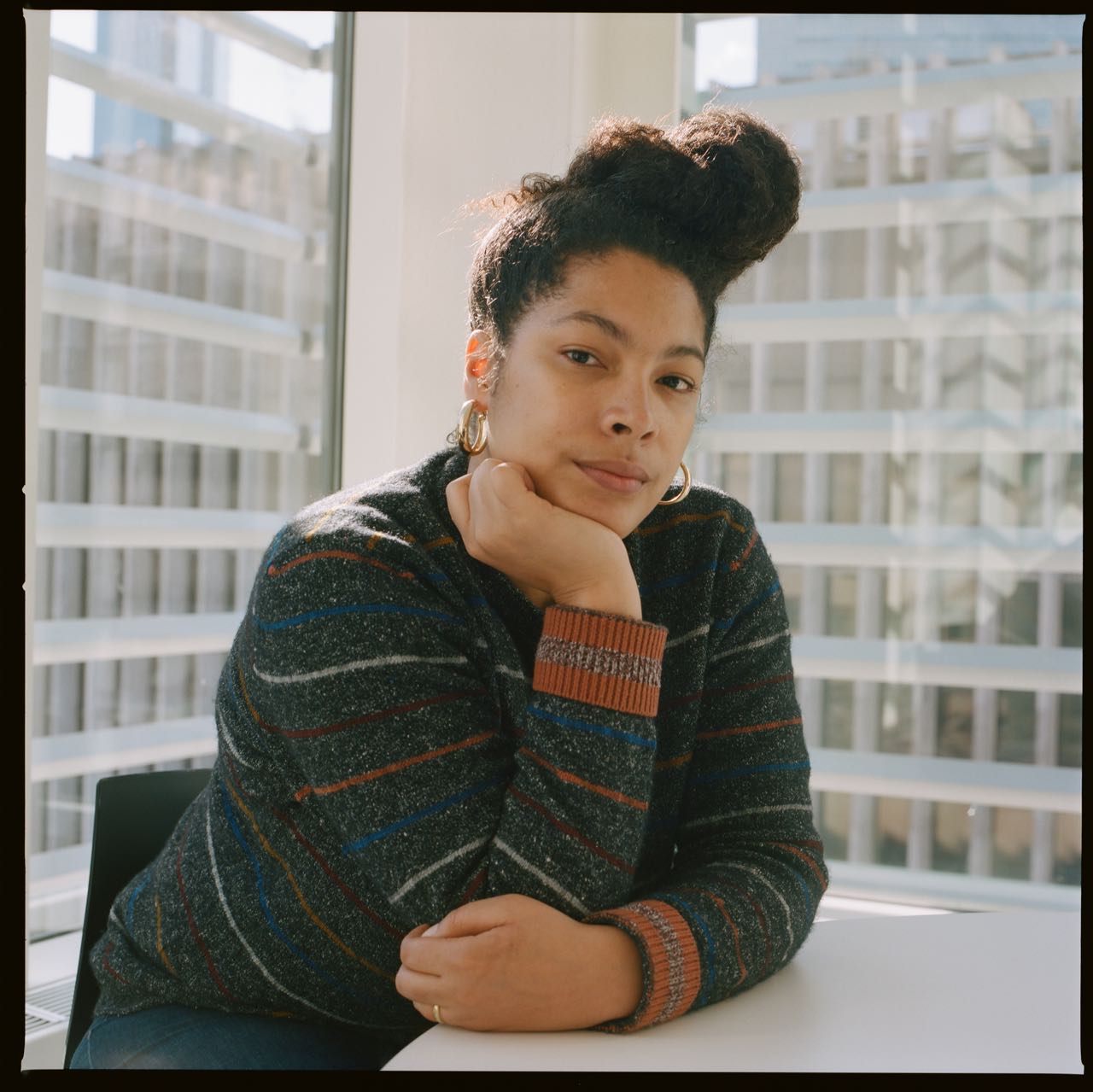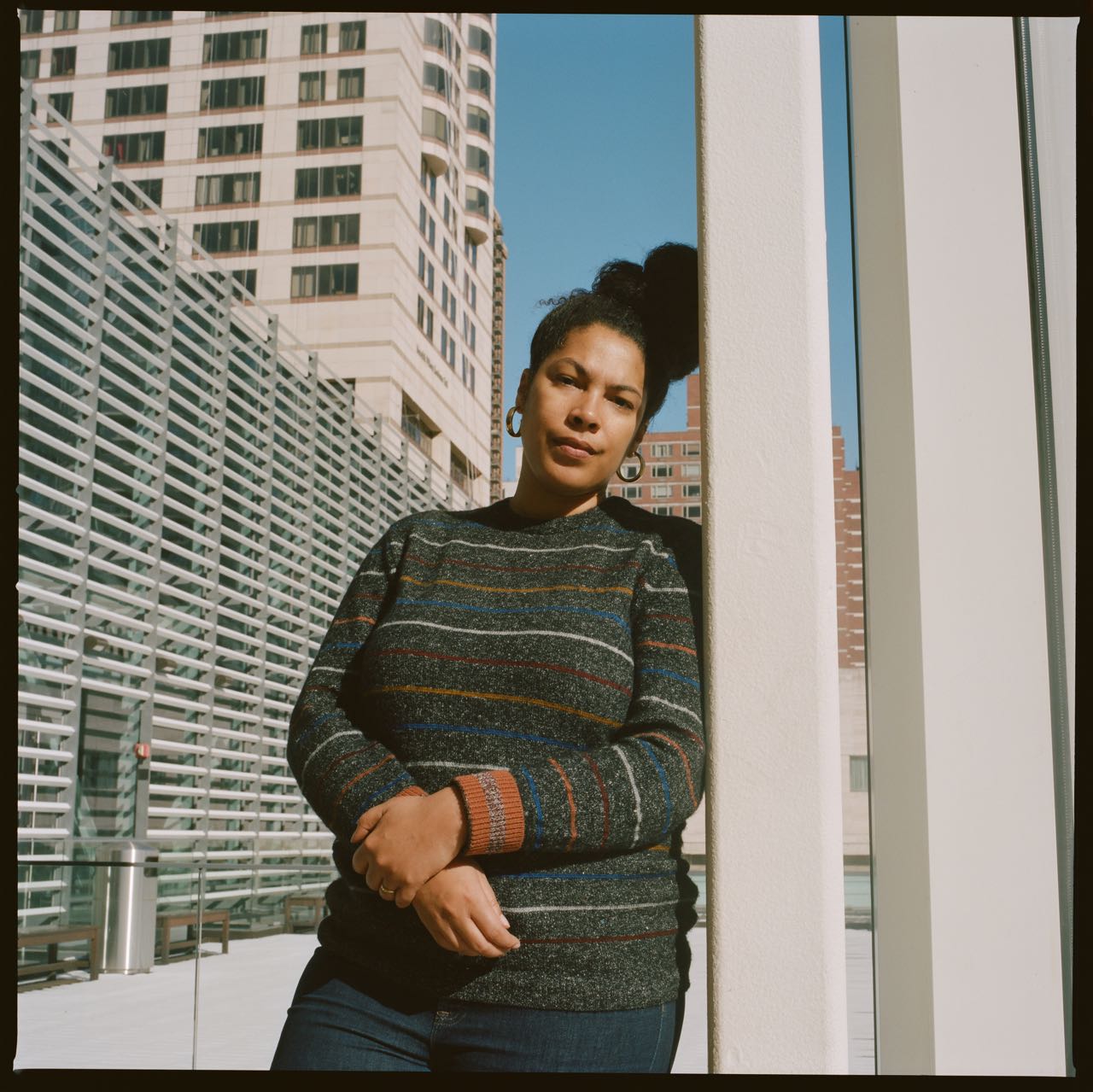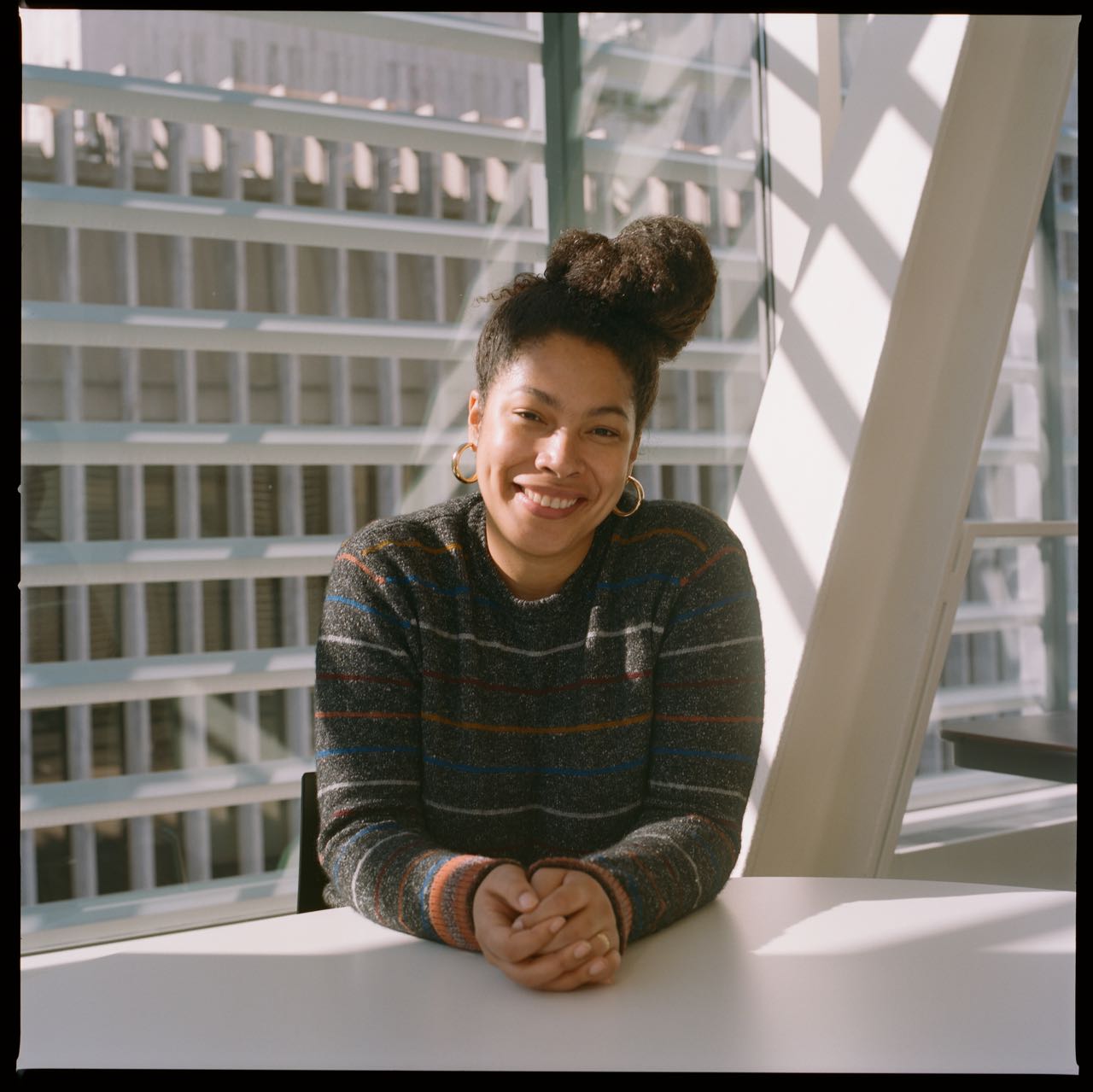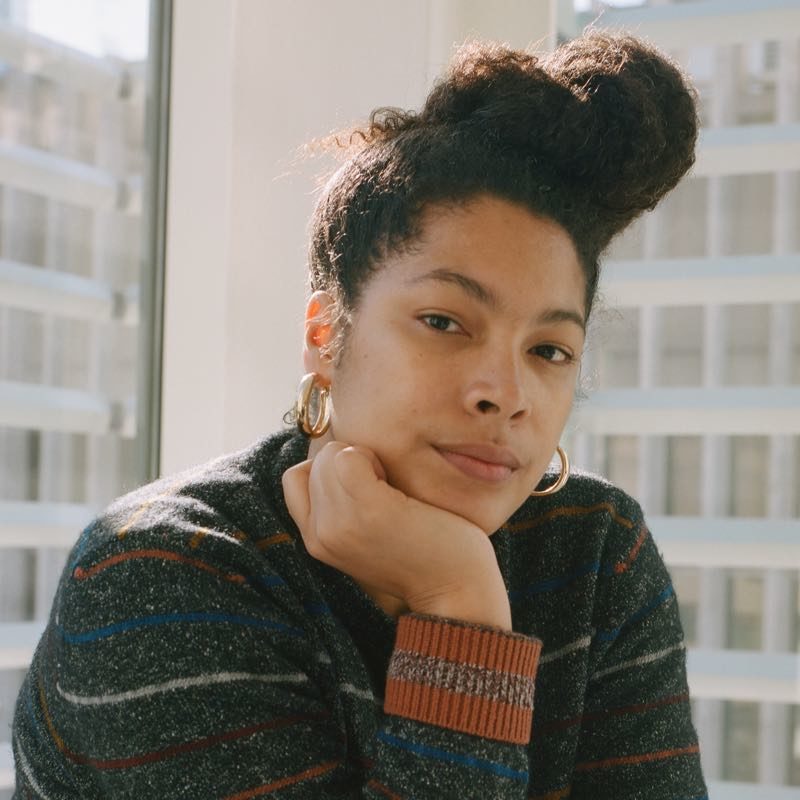Jackie Sibblies Drury on Marys Seacole and More

February 19th, 2019
In Jackie Sibblies Drury’s new play Marys Seacole, currently receiving its premiere production at LCT3 at Lincoln Center, the concept of care—who gives it and what it means—is explored while moving through time and place. Anchored in the historic figure of Mary Seacole, a Jamaican woman who became a nurse and traveled across an ocean to start a hospital during the Crimean War, the play looks at the cost of what has traditionally been considered women’s work. Marys Seacole also features an all-female cast, creative, and design team. Earlier this season, playwright Jackie Sibblies Drury made a splash with her play Fairview, a play that was both a critical and audience success (shortly after this interview was conducted it was announced that Fairview would be remounted for a return engagement). I spoke with Jackie about her writing process, care as women’s work, her career, and more.
What was your inspiration for writing Marys Seacole?
The inspiration was this real historical figure named Mary Seacole, who was a contemporary of Florence Nightingale. She was a Jamaican nurse who founded a hospital during the Crimean War to take care of British officers and soldiers, and wrote about it in this autobiography that is the first autobiography written by a woman of color to ever be published. There was something that’s kind of crazy about the idea of this woman doing all of these things in the middle of the 19th century—things that I haven’t done today. I was interested in her as a figure and in this glorious position as a nurse, and thinking about that in terms of how nurses exist today and drawing parallels.
When you were thinking about all of that, did you have a moment where you were like, “Okay, this feels like the way into writing a play about it”?
I was really confused about how to write a play about it for a really long time. I read the autobiography, and, it being an autobiography, it’s told only from her perspective, and that’s not the most theatrical. You need there to be different takes on things and different voices. It wasn’t until I tried to combine elements of her autobiography into a more contemporary time that it felt like something cracked open and it started becoming a play instead of just notes on an autobiography, which it was for a long time.
I wanted to ask you about the non-linear structure and how you went about developing that. It sounds like that that was always part of it once you started to write?
It was always going to take place in different times, in different countries, and different spaces. It was figuring out which ones resonated with both the facts of her autobiography, and which ones resonated with each other. Because her story is an immigrant story on steroids, where she goes into these different places and works in different countries, some sort of movement through time and space had to be a part of it. It was just figuring out how to amplify that.
Do you do quick or slow first drafts, or are you one of those writers who will do a first draft, but then the play really happens in the second draft?
I think everything about my writing process is really slow, and there are so many versions of each scene and each part of the play. Drafts is a generous word. The first pass was just like throwing spaghetti at a wall, and then I was like, “Let’s pretend that this is a draft.”
Beyond the autobiography, did you do a lot of other research?
I did a bunch of stuff. Some of it was trying to read more about the Crimean War. Some of it was reading more about Florence Nightingale, and reading some of her letters and some of her references to Mary Seacole. Some of it was reading about this other contemporary [of theirs] named Lady Alicia Blackwood, who was also a nurse in the Crimean War. There was that research of just trying to understand the context that she was writing in, and also trying to understand this conflict that I still don’t fully understand to be totally honest, why the Crimean War was fought, but I guess people also didn’t understand that at the time and that’s why it was scandalous. That was a part of it. I feel like the other element of it was observing people, spending time in parks and watching nannies and how they interacted with other caretakers on playgrounds, and spending time reading and thinking about women in contemporary caregiving positions. It was a whole bunch of stuff.
For the more contemporary things, was there something that really clicked for you that you knew you wanted to put in the play or that helped make sense of the play?
I visited this public university in Pennsylvania. They were doing a different play of mine and I got to observe. The faculty and the students there were really amazing, and they have this big theatre program, but a lot of it is preparing people to act as patients to help train medical professionals. So I watched them do this high school shooting scenario where the theatre students pretended to be victims of a high school shooting, and all of the nursing students were totally weirded out by these dramatic theatre students reenacting this and “being alive” and “in the moment” and trying to find authentic ways of doing what they thought their job was, whereas the nursing students had a very different mindset about what they were being tested on. It was this inherently theatrical conflict that also, at the heart of it, had a lot of truth in it and felt really resonant with some of the themes of the play.
Putting a version of that in the play added comedy, and in a not hitting you over the head way, it added the idea of how with all of the violence that’s inherent in our society—in capitalism, in the ways that we think about aggression and safety—that to have that amount of violence [in society], you also have to have people that are equipped to deal with the consequences of it. I feel at a national level we talk about being prepared for war and defense and all of this stuff, but we don’t think about the other side of it that much, and in some ways it’s because that aftermath, that healing and caring work, is a traditionally female job. I think it’s undervalued, and that’s interesting to me.

The cast is all women, and there’s so much in the play about caretaking, and mothers, and the different types of caretaking and the different types of mothers.
I was really trying to write about care and how it’s a really difficult thing to do. Also, I think that because we’re so used to seeing black women doing that kind of work it becomes invisible. It’s hard to care for someone else, or care about someone else in the way that actually helps anyone else. In Mary Seacole’s own autobiography she doesn’t spend that much time talking about her upbringing, but just mentions tangentially this patroness and this mother, and I was really interested in digging into that. It was a common thing in the Caribbean, if you were a middle class person or an upper-middle class person, to have a young girl come and stay with you, who you pay for schooling, and she is your maid. A lot of children were raised that way, and that it is this intergenerational unbonding of mothers and daughters. And that it even happened in Mary Seacole’s life, I thought was interesting.
I wanted to write about that, but also I’m in my thirties and a lot of women that I know are thinking in really meaningful ways about motherhood and whether or not that’s something that they want, and analyzing their relationships with their own mothers. It feels like it’s a complicated, anxiety-producing thing, not just this beautiful gift [the way] motherhood is often depicted. So I wanted to play with all of the trauma and complexity that goes into that essential relationship.
I think that it’s hard for me to write without having some sense of the theory behind the emotion. I tried to think about all of the different fraught relationships that could exist between caregiver and caretaker, or even thinking about the person that receives care as not a passive [thing] but as a demand. That makes it feel more dramatic. I tried to think of all the different permutations of that and see which ones resonated.
It is a difficult thing to try to depict someone that demands care being taken of them. It’s been really amazing to work with Ismenia [Mendes] who’s playing Miriam, who is one of the younger white female roles, and she’s playing, in a really amazing way, with upset and tears as a tool that women use to get that care, to have people care about them and care for them and get attention, and that’s a tool that’s more available to white women than it is to black women. There’s something that’s really interesting about putting that kind of emotion into the play and into the mix of things.
When you were writing all of these different women, what was your thought process like in terms of female archetypes and subverting them or not?
I was excited about trying to give all of the female performers who are going to actually play these roles a lot to do, and a lot of contradictory things to do. I got excited about seeing how feebleness could be mashed up with bawdiness or how incredible, aggressive strength could be then combined with a need for your mom, a need for being comforted. I’ve been thinking about lots of stuff for a long time, and part of it is this idea of these war scenes that have women in them. I’ve realized that’s not something that you see a ton, even though throughout history women have always been a part of that because women are always a part of anything that involves pain. I honestly didn’t realize that there were so many female characters until we got into rooms with actors, and then realizing how rare that is. I grew up in a family with a lot of women, and so I think that I’m really used to being in mostly female spaces. It’s odd to me whenever it’s the opposite.
When you’re writing, do you have a strong sense of the visual? Do you see it in your mind or do you feel like you have an idea of the physicality of the characters?
No, not really. I don’t really know how things exactly are going to work, and so that’s why whenever Kaye, our costume designer, comes in with a take on a character’s outfit it completely blows my mind. I feel like I got excited about the visuals and the physicality in terms of trying to make a lot of opportunities for [director] Lileana [Blain-Cruz] to make a lot of meaning and a lot of stage pictures that reify the theory in the play without having to use text. I tried to definitely create opportunities for that, but I didn’t have a good sense of what actually was going to result.
When you’re writing, do you see the play as a play, or do you see it as real life?
I think I always see it as a play. Whenever I’m writing I think I’m imagining myself in the audience watching people do stuff on a stage. I never imagine it not in a theatre.
Looking back at your career up until this point, what do you consider to be the biggest hurdle, or the biggest thing where you’re like, “If this one thing had been different it would’ve made things so much easier”?
The biggest hurdle was, in some ways, internal, but then also the external of getting myself to take myself and my ideas seriously, and also getting other people to take my ideas seriously. I think that there’s a lot of fear in the creation of theatre at a lot of different levels. If something artistically isn’t happening in a way that is instantly recognizable, people don’t necessarily have a lot of patience for it or think that means that something is wrong and needs to be fixed. So if you’re trying to work in a non-linear way or trying to do experiments in terms of form or content, a lot of people want to help you “fix” that instead of trying to embrace it. Making space to try out different things was really difficult at first, and if that space hadn’t been made by myself and by others, I don’t know that I would have a career or be writing now. I think I would’ve been frustrated and ended up trying to do something else.
Do you have something you found was a good model for making space to experiment?
I had a really good experience in grad school in that way. I went to Brown and I went there in this weird in-between time where I had an amazing class with Mia Chung, and Joe Walker and Mallery Avidon, and we had Lisa D’Amour as our de facto head of the program our first year and Erik Ehn as the de facto head of the program our second year. It meant that there wasn’t a deeply entrenched pedagogy for the “correct” approach to take towards making work, which I think was really freeing for all of us in a lot of ways, even though at the time it was also sort of like, “But why won’t someone tell me the right way to write a play?” I think there’s a lot about MFA programs that’s deeply problematic, but one of the things that they’re good for is allowing time and space and seriousness and people that are going to try to help you make whatever you’re making. Soho Rep is really important to me as a place to figure out what the elemental questions the work is trying to explore are, so that you can figure out the form that explores those questions in the most clear way. That theatre was pretty essential.
What do you think are the problems with MFA programs?
I teach in one, so I do believe that it’s great to give students time and space to work. It’s unfortunate that it’s professionalized playwriting as a field, and that people aren’t taken seriously until they’ve graduated from one of eight of them, and that breeds a kind of elitism. But I also think that they are essential to keeping playwriting going professionally in that so many writers who aren’t making money from theatre are making money from MFA programs, and that seems really necessary. If we had state-sponsored arts funding then maybe that would be less necessary and people could apprentice. But it seems like in any sort of training program, the idea of it is to give you the right way to do something and that seems antithetical to art in a lot of ways.
Post-MFA, is there anything that has surprised you about the career of a playwright, or something beyond the actual writing you felt took some time to figure out?
It takes a while to find your people and that’s so essential. I think that if there’s any value in any script that is finished that I’ve produced, it’s very much dependent on directors, designers, and performers that understand and build on the material that they get presented with in the first workshop or the first rehearsal. But realizing that there are amazing people that you can get along with really well, but not necessarily make your best work with, is a really difficult thing to realize and come to terms with.
Going forward in your career, what do you see as being the biggest hurdle?
I feel like I’m in a crazily privileged position right now. I never expected to have the kind of latitude that I have currently. I don’t feel like I have a hurdle, which I know sounds insane. I feel really lucky to be working with people that I’m really excited to be working with, and I just want to be able to keep doing that.
Earlier this season your play Fairview got a lot of attention. And now you have Marys Seacole fairly soon after it. Have you thought about if people will see them in relationship to each other or as how they will see them as being part of you as a writer? Is that something you’ve been thinking about or not really?
Not really, weirdly. I was working on both of these shows at the same time for a few years, but I wasn’t thinking about them relationally at all. I have a hard time trying to even think about what my approach is or what my oeuvre is because it seems like that’s not my responsibility and I don’t have that kind of objectivity around myself or my own writing.
Do you think about audience members imposing some sort of narrative or relation onto the two productions?
I have not thought about that at all, which is maybe really silly. They just don’t seem that similar to me, but I’m sure that there’s some gapingly obvious similarity, but I am not seeing it. But that’s [the audiences] prerogative and that’s kind of exciting because that’s like having someone have their own creative process in response to a work that I’ve put out there. If that helps someone make some broader point about something, or have some sort of engagement with the work, then that’s great.

What do you want to do next?
In the last few months, I’ve been deep in this Fairview world and then deep in this Marys Seacole world, and I think that I might need to take a moment to figure out what theatre work I really want to explore. I’ve never had two plays happen this close together, and I’ve never been in the position that I am now to take a moment to think about what a project would be really exciting to explore next. So I want to take the time to do that, to make sure that I’m trying to make stuff that’s worthwhile.
With Marys Seacole, what are the questions or thoughts that you hope the audience leaves with?
I’m hoping that people leave wanting to talk about a lot of stuff, but wanting to talk about care, and historic attitudes towards care, immigration, what women’s work is and means. And hopefully that they should call their mom.

